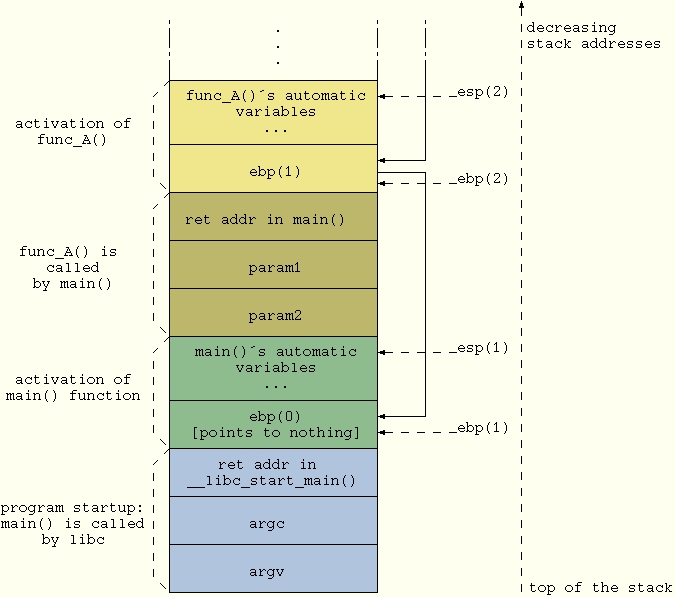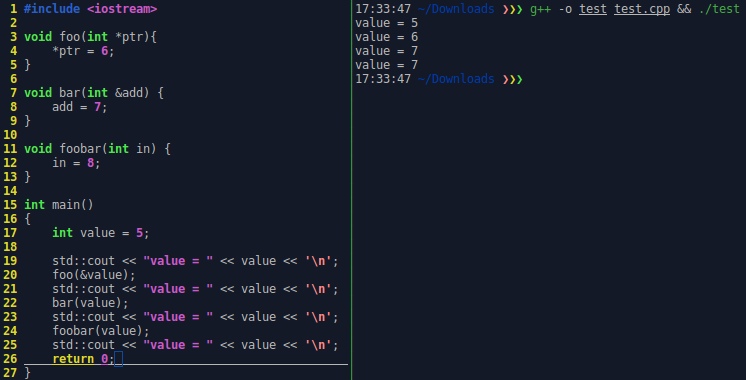Understanding memory management can be a bit difficult for beginners. However, it's still one of the most important things every developer should know. You'll need to know how it works to write memory-efficient code, to avoid stack overflows. This is especially true when developing for mobile platforms that have very limited memory. Today's cheapest smartphones have an average of 512MB memory. Android will kill any app that consumes too much memory with even warning you. So be careful beforing allocating too many objects.
Nows, let's have a look at memory and let's try to understand how it works.
Processes and threads
Basically, when a program is launched, the operating system grants it a certain space in memory. The allocated memory contains four main areas:
- Data: contains the global and static variables (explicitly initialized with a non-zero or non-NULL value, according to Wikipedia) used by the program. The content of constants is on the data segment, whereas references to constants are on the code (see next bullet point). The BSS segment (which is usually adjacent to the data segment) contains all global variables and static variables that are initialized to zero or do not have explicit initialization (in such a case, they are implicitly initialized to 0). The BSS segment can be considered a part of the data segment.
- Code segment: contains the assembly code of the program to be executed.
- Heap: contains all dynamically allocated primitive data types or objects (with
mallocin C ornewin C++, for instance). The developer is in charge of the lifetime of these variables, he has to explicitly deallocate memory (withfreein C ordeletein C++). - Stack: it's a LIFO structure. It basically contains all variables being declared inside functions. Every time you enter in a function, a stack frame is created for it. Every time you pass arguments by values to these functions, the arguments are copied to the stack. If you pass references or pointers, their content (an address) is also copied in order to be passed to the function. All the variables on the stack live only inside the function. When the function returns, they are destroyed and the corresponding allocated memory is freed. Stack values only exist within the scope of the function they are created in.

int add(int a, int b) {
return a + b;
}
int main() {
int c = add(1,2);
return 0;
}
Let's see how this code gets compiled in x86 assembly.
gcc -S -masm=intel main.c -fno-asynchronous-unwind-tables -o output.asm
Now, we'll see the instructions using the stack.
.file "main.c"
.intel_syntax noprefix
.text
.globl add
.type add, @function
add:
push rbp
mov rbp, rsp
mov DWORD PTR [rbp-4], edi
mov DWORD PTR [rbp-8], esi
mov edx, DWORD PTR [rbp-4]
mov eax, DWORD PTR [rbp-8]
add eax, edx
pop rbp
ret
.size add, .-add
.globl main
.type main, @function
main:
push rbp
mov rbp, rsp
sub rsp, 16
mov esi, 2
mov edi, 1
call add
mov DWORD PTR [rbp-4], eax
mov eax, 0
leave
ret
.size main, .-main
.ident "GCC: (Ubuntu 5.4.0-6ubuntu1~16.04.4) 5.4.0 20160609"
.section .note.GNU-stack,"",@progbits
Threads can be seen as sub-processes, although they belong to a specific process. Thus, they share the same virtual space (same data segment, etc). Only one thing is unique to each thread: they all have their own stack.
Allocating memory for objects and primitive data types
C++
Every dynamic allocation goes to the heap. The rest on the stack. So every left handside part of the following lines (what is on the left of the equal sign) is on the stack.
Global variables and static variables (not only global) go to the data segment.
Here are some examples, to make things clear:
void fonction() {
Object o(); // On the stack
Object o2 = Object(); // On the stack
Object& ref = o; // The reference is on the stack
Object* pt = &o; // The pointer is on the stack
Object* pt2 = new Object(); /* The right handside (the actual object)
is on the heap, the left handside is on the stack */
/* Everything that has been allocated on the stack will be
deleted at the end of the function */
}
To delete what is on the heap, you need to use the delete keyword.

Java
The main difference is that objects on the heap are automatically destroyed by the garbage collector, once they are no longer referenced. Moreover, only primitives are on the stack. All the objects are allocated on the heap. However, references (which are addresses) are passed as arguments to functions on the stack.
That's all folks!